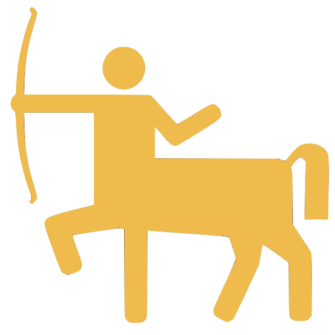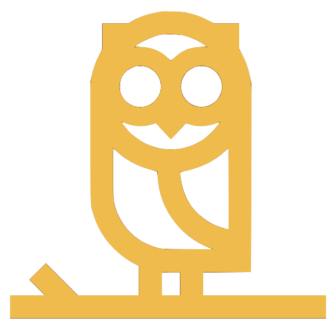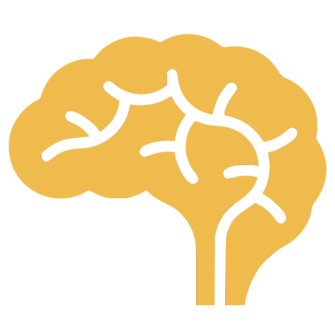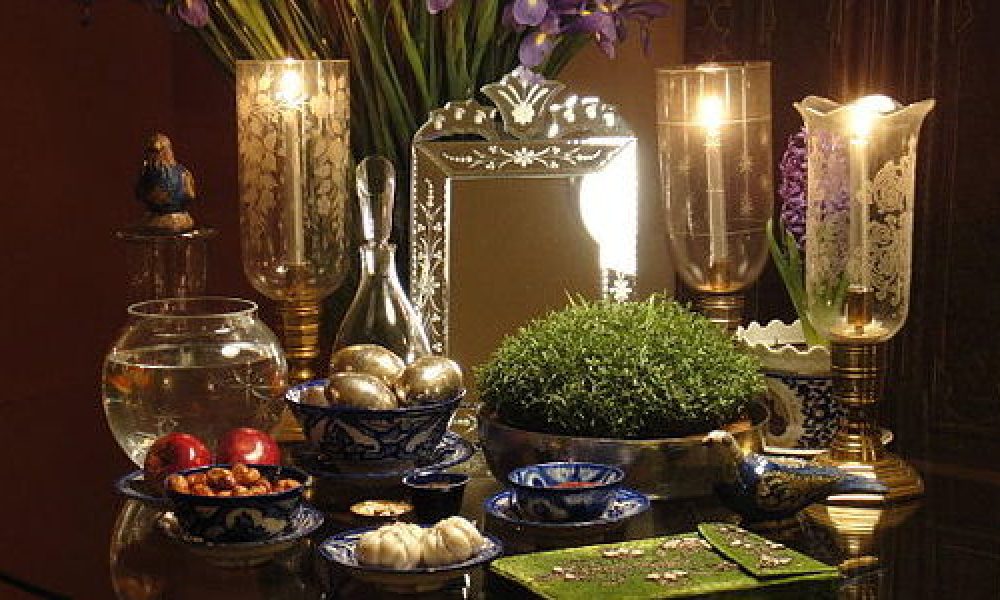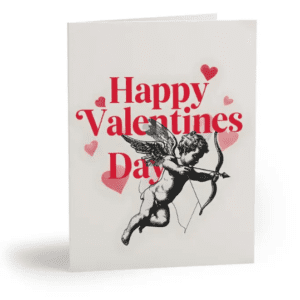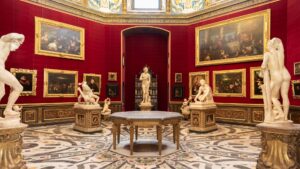Not knowing where to begin in my learning chronicle, I picked an approaching event; Norooz, the Persian New Year which takes place at 6:45 pm on March 20, 2015, cutting it very close to the time this would be published.
It turns out picking this event wasn’t a bad idea….
Living in a multicultural city and having a few Iranian friends, I do recall some customary aspects of Norooz, however I never bothered to further inform myself on the Whats and Whys. So I redeemed myself with some overdue inquiries and research, and eventually I realized the depth of my ignorance. On the other hand, I found myself facing a sort of can of worms… only these are positively curious learning worms.
Here’s what I knew before
- Norooz occurs on the Equinox, a fancy word with a meaning I have no clue about. Something to do with the first day of Spring.
- Iranians set up a table with a bunch of items on it. I’ve seen them in homes and in public places, like the YMCA. One thing that stood out is a square of grass.
- They eat a great dish of fish and rice with greens herbs inside.
- They get together and jump over a sort of campfire.
- Something about a tambourine player with a black painted face also comes to mind.
Here’s what I know now after some inquiry and clarification
1. The March Equinox (aka spring or vernal equinox) is in fact the first day of Spring. Equinox comes from Latin; aequus (equal) and nox (night), meaning that at this point, night and day are equal in length (almost). This is when the sun is directly over the equator, making the sunlight spread equally on the north and south hemisphere. There are 2 Equinoxes each year. One in March and one in September.
2. The table is set with symbolic items to ring in the new year with good fortune. It’s called “Haft Sin” which means Seven S’s, referring to the first letter of the 7 items – Persian letters of course. The original items are:
– Sprouts symbolizing rebirth
– Sweet pudding for affluence
– Dried olive fruit for love
– Garlic for medicine,
– Apple for beauty and health
– Vinegar for age and patience
– Sumac berries for sunrise
Over time, other items (that may or may not start with S) have been added to the possibilities of combination. They include:
– Candles symbolizing enlightenment and happiness
– Coins for prosperity and wealth
– Mirror for self-reflection
– Eggs for fertility
– Goldfish for life
– Rosewater for cleansing powers
3. The fish dish is called Sabzi Polo Mahi and is served with a bed of herbed rice. A friend told me that the herbs represent spring (rebirth) and that in the Zoroastrian tradition, (Norooz is rooted from 3000 year-old Zoroastrianism) red meat is known to bring a lot of anger in a person (this is very similar to Buddhism), therefore, fish is the choice of protein. An online source however says that fish is used because it symbolizes life.
4. On the eve of the last Wednesday of the year (I wonder why Wednesday), it’s a tradition to jump over a bonfire to purify oneself and take in the good energy of the fire. This event is called Chaharshanbe Suri. A very nifty verse is also recited. “My Yellowness is yours, your redness is mine” meaning “my paleness/sickness is yours, and your strength/health is mine”.
5. That tambouring playing black-painted face man dressed in red is called Hajji Firuz. He represents a firekeeper and is an important role in Zorastrianism. Fire brings about energy and health while it burns away the bad stuff.
6. Also, Sizdah Bedar is on the 13th day from the New Year. Families spend the day outside celebrating the passing of the bad luck 13th day.

My thoughts now…
- I love the symbolic and poetic meaning of all the above customs, especially the Haft Sin table. They bring to mind many traditions from other cultures including my own, which also involve the use of food, objects or actions with meanings and roots worth looking into!
- Zoroastranism is a very old and interesting religion. Definitely a must on the learning list.
- As far as my knowledge goes, fire is a universal symbol. It would be great to research other places and times that have it as a core element of worship.
- Humans across the world and time are connected through the similarities of their beliefs and their ‘need’ to follow customs. Something to look into as well.


